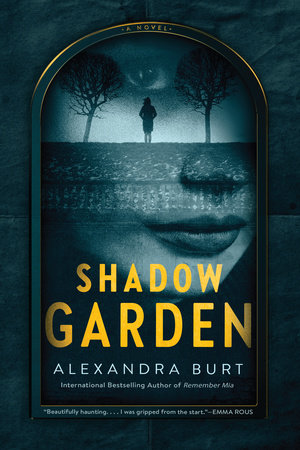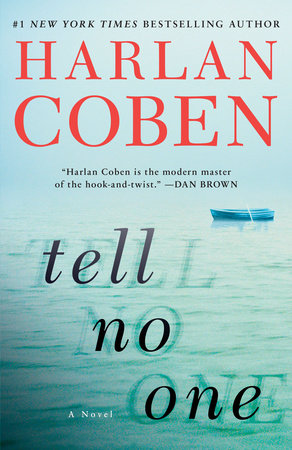A Talk with Carol Goodman
THE GHOST ORCHID is an unusual title for a book. Can you explain its role in the story?
I wanted something that tied the strands of past and present stories together. Ellis and her mother search for the orchid because it’s supposed to be a love charm. When they don’t find it, Ellis believes that she’s inherited some kind of malady that prevents the women in her family from finding love. When Corinth finds the orchid in the bog behind the cabin in the Sacandaga Valley, she doesn’t pick it because she associates it with the stories her mother told her about girls killing themselves over doomed love affairs. Only later, when she returns to the cabin, Alice gives her an orchid which Corinth drops and Ellis, in the present, finds. It functions, then, as a symbol of love.
The gardens in your novel take on a life of their own. How and why do they become a character in their own right?
I became very interested in Renaissance Italian gardens while I was researching this book. I loved the idea that they were planned with elaborate iconography—that walking through these gardens was like taking a kind of journey. I thought it would be interesting to plan a garden for the book that could represent the progression of the characters who were moving through it. (In fact, I took a class on Landscape Design and while my classmates were designing real gardens, I worked on designing my imaginary garden). Since the garden is part of an artist’s colony I used symbols associated with inspiration—the Muses and the spring of Hellicon and Pegasus. I think the garden really started to take on a life of its own, though, because it holds the impressions of all who have passed through it: Aurelia and her children, Corinth, even the Native Americans who first discovered the spring.
Was there a particular character, setting or idea that inspired you to write THE GHOST ORCHID?
The character of Corinth came to me first. I was reading about the Fox sisters who were responsible for setting off the whole spiritualist craze in upstate New York during the nineteenth century and I came across a letter from Kate Fox written while she was staying in the household of Horace Greeley, editor of the New York Tribune, and his wife, Mary, who had lost their young son. In it Kate wrote that she hated Mary Greeley and wished to leave. I thought it was such an interesting situation and while the Foxes later admitted to being frauds, I wondered what it would be like for someone who really could communicate with the dead.
As for setting, in my twenties I worked as a secretary at the artist’s colony, Yaddo, in upstate New York and was profoundly affected by the atmosphere there. While Bosco is its own place, and the people there have nothing to do with anyone who’s ever been at Yaddo, I was definitely inspired by the house and gardens of Yaddo.
Would you call THE GHOST ORCHID a ghost story? What constitutes a modern ghost story?
Yes, I would. There are ghosts in it! I’m not sure what makes it modern. Perhaps it’s Ellis’s own ambivalence about working on a ghost story herself. She imagines the story she’s writing to be more like The Turn of the Screw, but THE GHOST ORCHID is much less ambivalent than Henry James’s novel. Yes, the ghosts do have a figurative element: I wanted to talk about the inspiration behind writing as a kind of possession, the way hearing your characters’ voices in your head was a little like speaking with the dead. But as I wrote it I realized that I couldn’t bring it off without really confronting the idea that some piece of us does go on after death.
The past and present are interwoven in all of your novels. In this novel, in fact, the present-day characters are, whether they know it or not, genetic descendants of the nineteenth-century characters about whom they are writing. What is it about this structure that appeals to you?
I wish I knew because it’s hard to structure a novel with two story-lines going on. I guess I’ve just always been interested in how the past impinges on the present, how it shapes who we are. I started out, in The Lake of Dead Languages, exploring how events in Jane Hudson’s youth haunted her present life and then in The Seduction of Water I was interested in how Iris’s life was affected by her mother’s history. In The Drowning Tree I wanted to see if I could reach a little further back into the past—and in THE GHOST ORCHID I went even further back. I love the nineteenth century, especially the whole spiritualist movement in upstate New York, and I was intrigued by the idea of writing a novel in which the past not only influenced the present, but seems to be occurring at the same time as the present. I’ve always loved what Faulkner said about the past: “The past isn’t dead. It isn’t even past.”
What did you learn about the world of vaudeville while you were researching this book?
I mostly read about the magicians—Houdini and his predecessor Jean-Eugene Robert-Houdin. I even came across a magician who was known as “The Great Bosco” which I took as a good omen of sorts for the novel. I’d love to someday do more reading about vaudeville—my great-aunt was a vaudeville dancer and my mother appeared on the stage when she was an infant.
You spent your college years in New York’s Hudson Valley, and though you live on Long Island you have set your first four novels in the Hudson Valley. What is it about that landscape that draws you?
I’ve always been drawn to the Hudson Valley because of its physical beauty, its sense of history, and its haunted aura. It’s the last attribute that’s made it such a great place to set books. I like to create imaginary places in a real geographical framework. I feel as though I can slip my fictional schools, towns and artists’ retreats into the valley’s misty little pockets—into those haunted dales where Rip Van Winkle snoozed away a hundred years. For the next book, though, I thought I’d take a break. It’s set in Italy.
You set your books in a particular kind of academia—specifically northeastern literary academia. What draws you to this world?
I loved my college years at Vassar and I think my imagination was shaped by the physical beauty of that campus. I was reminded of that a few years ago when I attended a lecture on the landscape architecture of the campus. The lecturer quoted Winston Churchill: “First we shape our buildings, and afterwards our buildings shape us.” That was a revelation to me. I realized how often I used bits and pieces of the campus in the settings of my book—I still often dream of the campus. Also, I’ve always found the idea of academia appealing and sometimes regret that I didn’t go on to get a Ph.D. and teach college. My vision of academia, though, is probably a lot rosier than the reality, but even the negatives I hear about—the insularity and the politics—make for great intrigue in a mystery.
Your husband was recently profiled in The Wall Street Journal as a poet/stockbroker. What is it like to have two writers in the same household?
Lee has been such a profound influence on my writing that it’s hard to know where to even start. He reads and comments on each chapter as I write it, which makes the long lonely journey of writing a novel a lot less lonely—and improves the final product. He brings his poems to our Saturday night dinner each week, but I’m afraid I’m much less of a help to him because I find the ability to write metered verse far beyond my expertise (I imagine that you have to have the kind of mathematical mind he has to do that well). I could never have created the character of Zalman Bronsky without Lee writing the poems for Zalman. It was such fun doing that collaboration that I commissioned him to write a series of Renaissance sonnets for the next book.
You have said that language itself is intrinsic to your stories. Can you explain?
Well, when I start out writing a scene I have a visual picture of what’s happening and perhaps a few bits of dialogue or description, but once I start writing the scene it’s often shaped by the words I choose. For instance, in the opening description of Bosco I describe the wind as making a sound like a mother saying hush. I hadn’t realized, until I wrote that description, that the story was about a woman who had lost her children, or that the “silencing” of the children would be such an important motif in the novel.
What is the importance of Native American mythology to the story you tell in THE GHOST ORCHID?
I’ve used Greek mythology and fairy tales in my novels to create a sense of an alternative world to what’s going on in the realistic narrative. Because of this novel’s setting, I thought it would be great if I could integrate Native American mythology into the story. I read a lot of Iroquoian and Algonquin mythology and the first draft of the novel had a lot more of that in it, but ultimately I thought I had to pare down that material. I wanted, though, to suggest with it the long history of the place, a history that predated its European settlers.
What can your readers expect to see next from you?
I’m working on a novel called Villa of the Mysteries. It’s about a Renaissance Sonnet scholar, Rose Blum, who discovers a series of love sonnets by a Italian woman poet of the sixteenth century who may, or may not, have been writing her poems to William Shakespeare. It starts in Manhattan, at a fictitious college called Hudson College, and then moves to a villa outside of Florence, where … [drum roll, please] the past threatens to impinge upon the present! The poems are all written by my favorite sonneteer, Zalman Bronsky, aka Lee Slonimsky.














